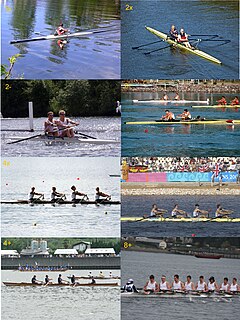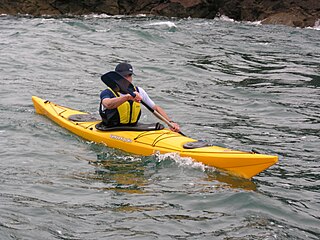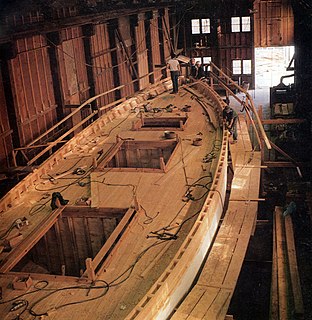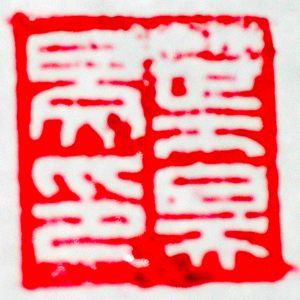
Longships were a type of specialised Viking warships that have a long history in Scandinavia. Their existence being archaeologically proven and documented from at least the fourth century BC. Originally invented and used by the Norsemen for commerce, exploration, and warfare during the Viking Age, many of the longship’s characteristics were adopted by other cultures, like Anglo-Saxons and continued to influence shipbuilding for centuries. The longship's design evolved over many centuries, beginning in the Stone Age with the invention of the umiak and continuing up until the 6th century with clinker-built ships like Nydam and Kvalsund. The longship appeared in its complete form between the 9th and 13th centuries. The character and appearance of these ships have been reflected in Scandinavian boat-building traditions until today. The particular skills and methods employed in making longships are still used worldwide, often with modern adaptations. They were all made out of wood, with cloth sails and had numerous details and carvings on the hull.

Rowing, sometimes referred to as crew in the United States, is a sport whose origins reach back to Ancient Egyptian times. It involves propelling a boat on water using oars. By pushing against the water with an oar, a force is generated to move the boat. The sport can be either recreational for enjoyment or fitness, or competitive, when athletes race against each other in boats. There are a number of different boat classes in which athletes compete, ranging from an individual shell to an eight-person shell with a coxswain.

Fishing is the activity of trying to catch fish. Fish are normally caught in the wild. Techniques for catching fish include hand gathering, spearing, netting, angling and trapping. “Fishing” may include catching aquatic animals other than fish, such as molluscs, cephalopods, crustaceans, and echinoderms. The term is not normally applied to catching farmed fish, or to aquatic mammals, such as whales where the term whaling is more appropriate. In addition to being caught to be eaten, fish are caught as recreational pastimes. Fishing tournaments are held, and caught fish are sometimes kept as preserved or living trophies. When bioblitzes occur, fish are typically caught, identified, and then released.

A dory is a small, shallow-draft boat, about 5 to 7 metres or 16 to 23 feet long. It is usually a lightweight boat with high sides, a flat bottom and sharp bows. They are easy to build because of their simple lines. For centuries, dories have been used as traditional fishing boats, both in coastal waters and in the open sea.

The Chesapeake and Ohio Canal, abbreviated as the C&O Canal and occasionally called the "Grand Old Ditch," operated from 1831 until 1924 along the Potomac River from Washington, D.C., to Cumberland, Maryland. The canal's principal cargo was coal from the Allegheny Mountains.

A sea kayak or touring kayak is a kayak developed for the sport of paddling on open waters of lakes, bays, and the ocean. Sea kayaks are seaworthy small boats with a covered deck and the ability to incorporate a spray deck. They trade off the maneuverability of whitewater kayaks for higher cruising speed, cargo capacity, ease of straight-line paddling, and comfort for long journeys.

Boat building is the design and construction of boats and their systems. This includes at a minimum a hull, with propulsion, mechanical, navigation, safety and other systems as a craft requires.

Sculling is the use of oars to propel a boat by moving the oars through the water on both sides of the craft, or moving a single oar over the stern. By extension, the oars themselves are often referred to as sculls when used in this manner, and the boat itself may be referred to as a scull.

A currach is a type of Irish boat with a wooden frame, over which animal skins or hides were once stretched, though now canvas is more usual. It is sometimes anglicised as "curragh".
This is a partial glossary of nautical terms; some remain current, while many date from the 17th to 19th centuries. See also Wiktionary's nautical terms, Category:Nautical terms, and Nautical metaphors in English. See the Further reading section for additional words and references.

The bucentaur was the state barge of the doges of Venice. It was used every year on Ascension Day up to 1798 to take the doge out to the Adriatic Sea to perform the "Marriage of the Sea" – a ceremony that symbolically wedded Venice to the sea every year on the "Festa della Sensa".

A seal, in an East and Southeast Asian context is a general name for printing stamps and impressions thereof which are used in lieu of signatures in personal documents, office paperwork, contracts, art, or any item requiring acknowledgement or authorship. The process started in China and soon spread across East Asia. China, Japan and Korea currently use a mixture of seals and hand signatures, and increasingly, electronic signatures.

Rowing is the act of propelling a boat using the motion of oars in the water by displacing water to propel the boat forward. Rowing and paddling are similar but the difference is that rowing requires oars to have a mechanical connection with the boat, while paddles are hand-held and have no mechanical connection.

A punt is a flat-bottomed boat with a square-cut bow, designed for use in small rivers or other shallow water. Punting refers to boating in a punt. The punter generally propels the punt by pushing against the river bed with a pole. A punt should not be confused with a gondola, a shallow draft vessel that is structurally different, and which is propelled by an oar rather than a pole.

Traditionally, many different kinds of boats have been used as fishing boats to catch fish in the sea, or on a lake or river. Even today, many traditional fishing boats are still in use. According to the United Nations Food and Agriculture Organization (FAO), at the end of 2004, the world fishing fleet consisted of about 4 million vessels, of which 2.7 million were undecked (open) boats. While nearly all decked vessels were mechanised, only one-third of the undecked fishing boats were powered, usually with outboard engines. The remaining 1.8 million boats were traditional craft of various types, operated by sail and oars.






















